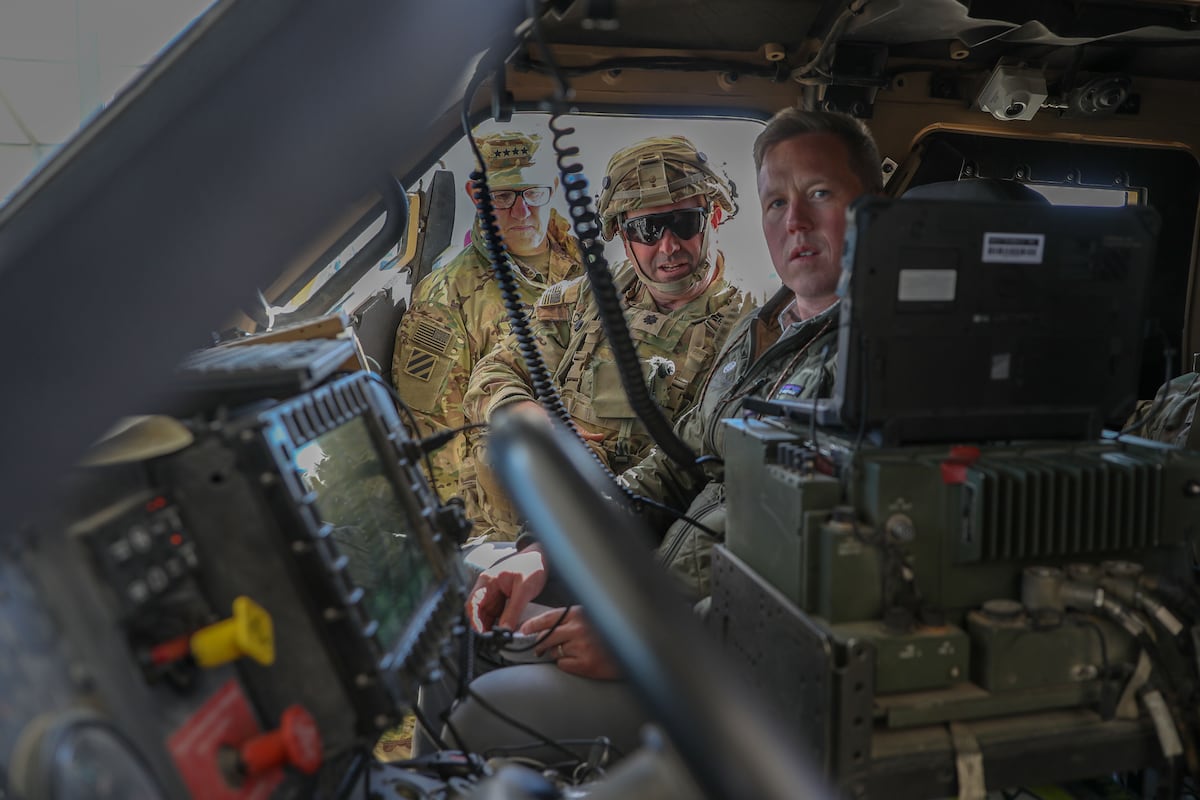



The U.S. Army has picked Anduril to be the lead integrator to build its next-generation command-and-control prototype, or C2, awarding the tech company a $99.6 million contract to deliver it in less than a year, according to statements from the service and company.
The prototype architecture will consist of “integrated and scalable” C2 capabilities using hardware, software and applications through a common data layer, the Army stated in a July 18 announcement.
The Army’s effort to overhaul its command-and-control ecosystem, dubbed Next-Generation C2, is one of the top priorities for Army modernization — if not the highest.
The capability will be delivered to the 4th Infantry Division, the service said.
The prototype will be “integrated onto compute nodes aboard multiple different types of mechanized vehicles” throughout the Division immediately upon award of the contract, Anduril noted, and will be continuously developed working directly with soldiers.
The Army’s command-and-control architecture, which enables commanders to plan, decide and execute missions, was cobbled together over 20 years during the Global War on Terror. Most warfighting functions used separate stove-piped systems, amounting to a total of 17 programs of record.
Army Chief of Staff Gen. Randy George recognized getting command-and-control right was imperative to future battlefield success and decided to embark on a program to fix the service’s C2 capabilities to avoid operational disruption while creating the necessary clean-sheet system from scratch.
The Army’s effort to overhaul its command-and-control ecosystem, dubbed Next-Generation C2, is one of the top priorities for Army modernization — if not the highest.
Roughly 18 months ago, at the National Training Center at Fort Irwin, California, soldiers at the Army’s experimentation event Project Convergence and industry partners, including Anduril, demonstrated a proof-of-concept at the unclassified level for what a Next-Generation C2 system, or NGC2, might look like.
The Army established the NGC2 program office in April 2025.
“NGC2 is not just a capability. It’s a blueprint for how we’ll deliver future Army systems,” Gen. James Rainey, Army Futures Command commander, said in the service’s statement. “This award reflects a fundamentally different relationship with industry, built on shared purpose, speed, and trust. By co-developing with our industry partners and putting soldiers at the center of design, we’re delivering what they need — faster, more integrated, and ready for the fight.”
Anduril will, over the next 11 months, come together with other industry partners like Palantir, Striveworks, Govini, Instant Connect Enterprise (ICE), Research Innovations, Inc. (RII) and Microsoft, the company listed in a statement.
“For NGC2, Anduril and its partners will create an ecosystem that can rapidly integrate a range of technologies into a singular architecture so that soldiers can access various kinds of compute, communications and information processing capabilities all at once,” the company describes. “Time sensitive decisions will be faster and soldiers will be more connected across Corps to Company.”
The Army has often said the future battlefield’s victor will be the one to harness the speed of decision-making and execute missions faster than the enemy. Anduril’s Lattice Mesh intends to “enable machine-to-machine interfaces that deliver effects in a fraction of the time compared to legacy systems and networks,” the company states.
Lattice Mesh is already in use across several joint and service initiatives to include the Defense Department’s Chief Digital and Artificial Intelligence Office Edge Data Mesh.
“NGC2 will connect digital assets, remote sensors, command posts and soldiers on the ground with real-time intelligence and systems,” Anduril states. “This solution is in stark contrast to the siloing of data and intelligence across classified and unclassified stovepiped systems that currently exists.”
While Anduril leads the charge to develop NGC2, the Army will also continue to hold competitions for additional vendors and vendor teams and plans to award additional contracts later this fiscal year for prototyping with other units including the 25th Infantry Division and III Corps Headquarters, according to the service.
“We know that timely and integrated data will be critical to enable commanders’ decision making in future warfare, and we need industry to bring their best in order to meet the speed of need for our warfighters,” Brig. Gen. Shane Taylor, who leads the Army’s Program Executive Office Command, Control, Communications and Network (PEO C3N), said.
“NGC2 is not a one-and-done contract, but a long-term effort of continuous contracting and investment in the technologies that will deliver needed overmatch for our force.”
Jen Judson is an award-winning journalist covering land warfare for Defense News. She has also worked for Politico and Inside Defense. She holds a Master of Science degree in journalism from Boston University and a Bachelor of Arts degree from Kenyon College.
